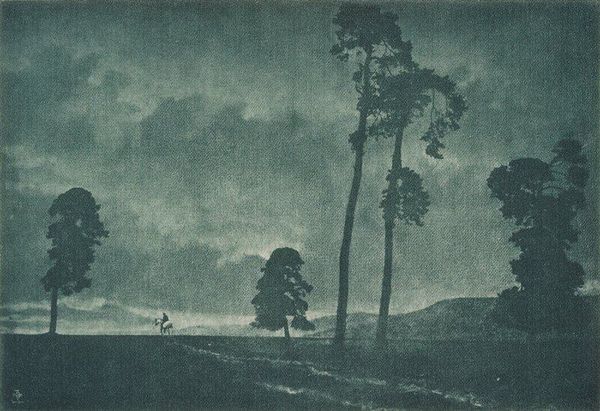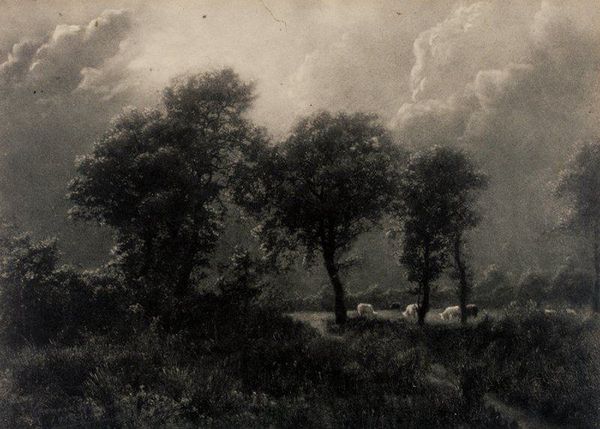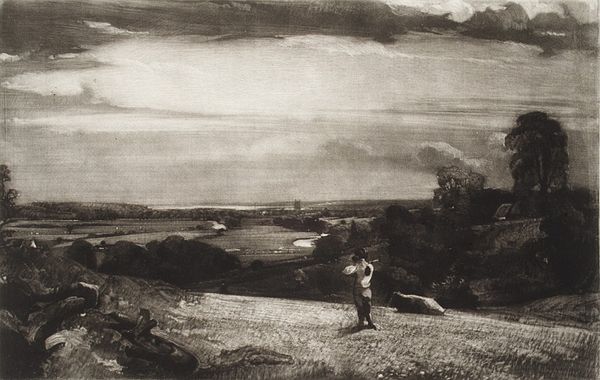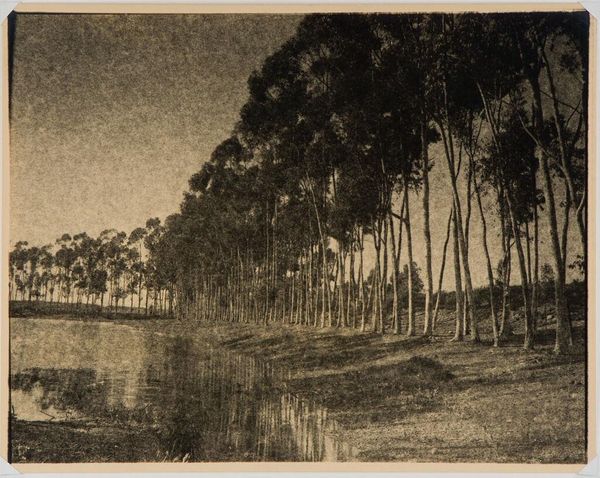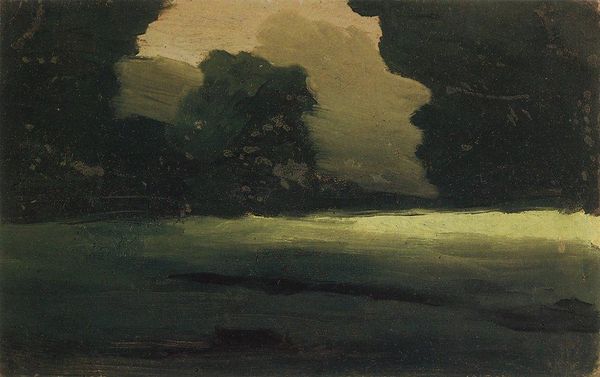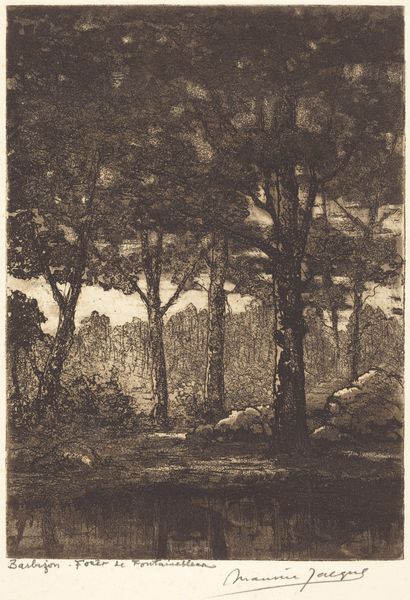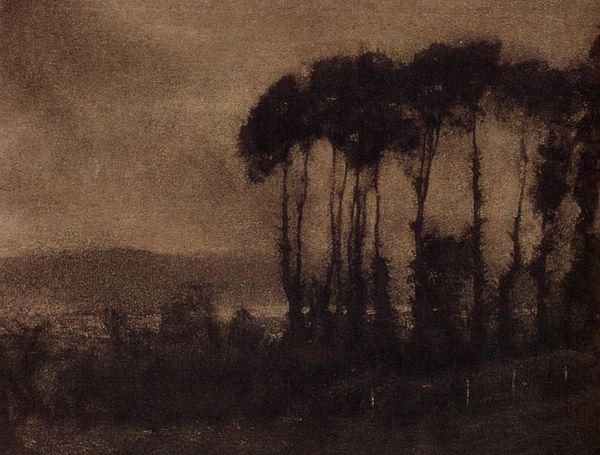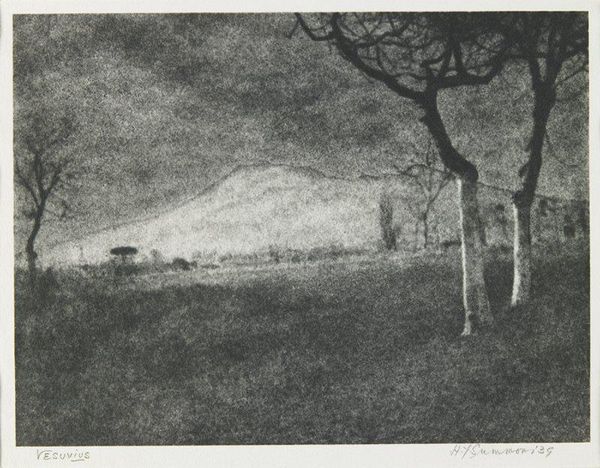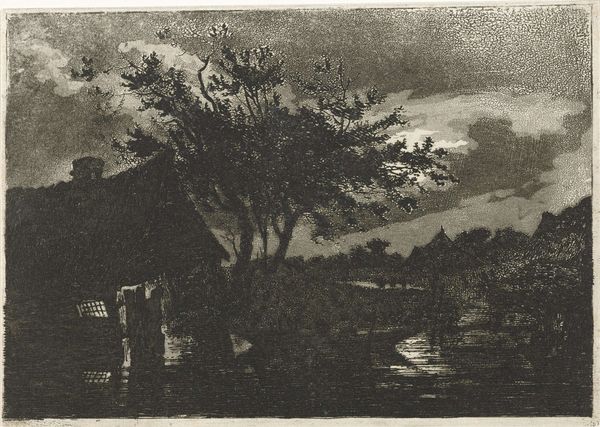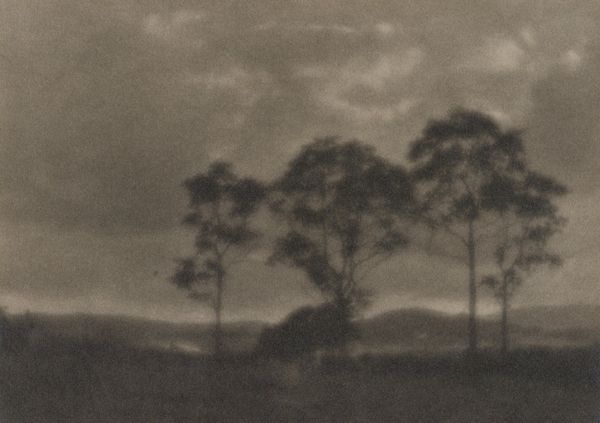
photogravure, print, photography
#
water colours
#
photogravure
# print
#
landscape
#
photography
#
romanticism
Dimensions: 4 13/16 x 7 in. (12.22 x 17.78 cm) (image)
Copyright: No Copyright - United States
Theodor Hofmeister created "The Solitary Horseman" using a process called pigment printing. This technique involves applying a layer of pigmented gelatin to paper, then exposing it to light through a negative. The result is a soft, atmospheric image, where the texture of the paper is clearly visible, almost like a woven textile. This tactile quality contrasts with the smooth surfaces we often associate with photography. It's worth noting that this was a very labor-intensive process, requiring careful control of the chemicals and printing conditions, and a high degree of skill. Hofmeister's choice of this method is significant. Pigment printing, like other alternative photographic processes, was often favored by photographers who saw themselves as artists. They embraced a hands-on approach to making, and the aesthetic qualities it offered, rather than the purely mechanical, mass-produced look of commercial photography. The work involved, and the beauty of the final print, made a statement about the value of artistic labor in an age of increasing industrialization. This piece reminds us that even in photography, the hand of the artist leaves its mark.
Comments
No comments
Be the first to comment and join the conversation on the ultimate creative platform.
